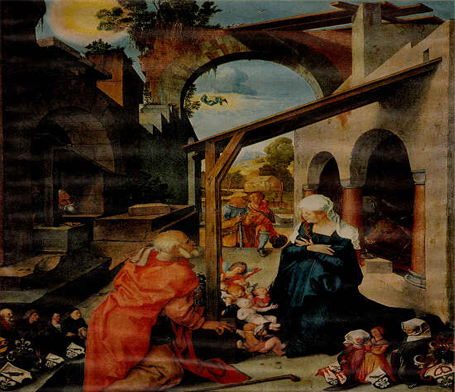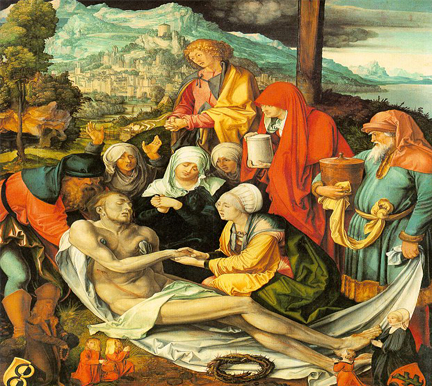Oil Painting » List of Painters » Albrecht Durer
EARLY DAYS:
Albrecht Durer was born on May 21, 1471 in Nuremberg, Germany. He was a painter, printmaker, and theorist of the German Renaissance. He was the first great artist to make prints as an art form, and is widely considered one of the greatest artists of all time.
Durer was the eldest son of a goldsmith and a Hungarian mother. He began his apprenticeship at the age of 15 under German painter and printmaker Michael Wolgemut. Durer was an exceptionally talented student and was soon producing his own copperplate engravings. Durer's earliest works show Italian influences, particularly in his use of linear perspective.
In 1494, Durer travelled to Italy and spent time in Venice, where he was introduced to the art of the Renaissance. He was especially inspired by the works of Leonardo da Vinci and Raphael. He also studied anatomy and perspective, and his drawings from this time show a tremendous attention to detail.
In 1495, he returned to Nuremberg and began to produce his own woodcut prints. He used the woodcuts to produce book illustrations and prints of religious scenes, such as his famous "Feast of the Rose Garlands" of 1497. He also created a series of self-portraits, which are some of the earliest of their kind.
In 1505, Durer published his most famous work, the treatise "On the Art of Measurement with Compass and Ruler" which outlined his theories on linear perspective and proportion. This treatise was extremely influential and was widely read and studied by artists in Europe.
In 1507, Durer began to experiment with the medium of etching. He produced a series of etchings of religious scenes, and his work in this medium was highly praised. During this time, he also produced several altarpieces, including the famous "Adoration of the Magi" of 1504.
By the time of his death in 1528, Durer had become one of the most celebrated artists in Europe. His works had a tremendous influence on both painting and printmaking, and his treatise on perspective was one of the most influential artistic texts of the time. His prints and paintings are still admired and studied today.

Personal Details
| Name | Albrecht Durer |
| Place of birth | Nuremberg, Holy Roman Empire |
| Date of Birth | 21 May 1471 |
| Date of Death | 6 April 1528 (aged 56) |
| Nationality | German |
| Field | Printmaking, Painting |
| Works | Knight, Death, and the Devil (1513) Saint Jerome in his Study (1514) Melancholia I (1514) Durer's Rhinoceros |
CAREER:
Dürer learned not only painting but also wood carving and elementary copper engraving under Wolgemut. At the end of his apprenticeship in 1490 he travelled (the so-called Wanderjahre). In 1492 he arrived in Colmar, intending to study under Martin Schöngauer, a well regarded painter-engraver of his time. He found that Schongauer had died the previous year, but he was received kindly by the family of the deceased master there and in Basel.
Under them he evidently had some practice both in metal-engraving and in furnishing designs for the woodcutter. He left Basel some time in 1494 and travelled briefly in the Low Countries before he returned to Nuremberg. From this period, little of the work that can be attributed to him with certainty survives, though several of the illustrations of the Nuremberg Chronicle are sometimes attributed to him.
WORKS OF ALBRECHT DURER:





